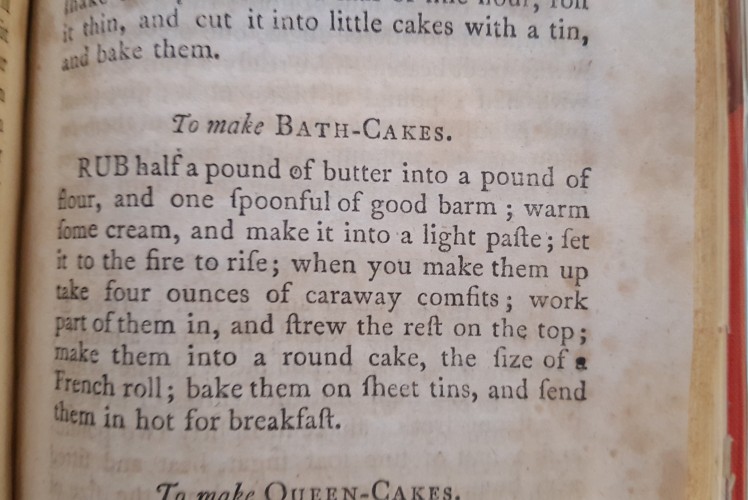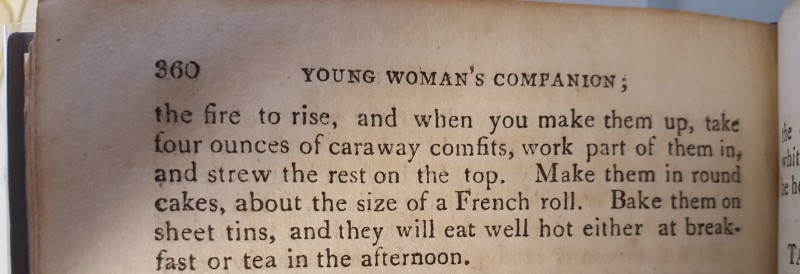In Jane Austen’s six published novels, characters frequently dine together, but in most cases, little description is provided of exactly what they are eating and drinking. On those occasions when Austen does draw out details of the food, it is significant. For example, one of the few mentions of specific foodstuffs in Pride and Prejudice are the "beautiful pyramids of grapes, nectarines, and peaches," served at Pemberley during Elizabeth Bennet’s visit to Georgiana. The fruit provides an opportunity to bridge the divides that had made the visit stilted “for though they could not all talk, they could all eat.” As Maggie Lane notes in Jane Austen and Food, these pyramids of hothouse fruit also demonstrate the wealth and generosity of Pemberley (and its owner) and subtly hint at the social staircase that Elizabeth must climb in order to marry Mr. Darcy.
During this final month of the exhibit The Life and Times of Lizzy Bennet (November, 20, 2017 - March 30, 2018), a series of “Dining with Jane Austen” posts will explore mealtimes in Georgian England and look at some of the recipes that might have been enjoyed by Austen or her characters. In this first installment, we’ll take a look at breakfast.
In most genteel households of the late 18th and early 19th century, breakfast seems to have been served around 9 or 10 o’clock in the morning, which meant early-risers had hours to fill before their first meal. Before the the breakfast hour at Chawton House, Jane Austen was in the habit of practicing piano. When traveling, she often wrote letters or (in London) went shopping in the early morning. In Emma, John Knightley takes his young sons on a walk before breakfast, while in Sense and Sensibility, Edward Ferrars stretches his own legs on a journey to the village while visiting Barton Cottage, and in Persuasion, a small group of the travelers to Lyme stroll down to the sea before their morning repast.
Breakfast while traveling could be quite substantial and breakfasts following wedding celebrations were sometimes elaborate. However, the ordinary, at-home Georgian breakfast was usually light and simple. Bookended by the bread, ale, and cheese of the early 18th century, and the large, hot breakfasts of eggs, kidneys, etc. favored by the Victorians, this was a period in which most genteel breakfasters satisfied themselves with bread, cake, and hot drinks (tea, coffee, perhaps chocolate for the very well-to-do). Toast was often made at the hearth by the breakfasters themselves (rather than servants) making this a comparatively private and intimate meal.
In one of her letters to Cassandra, Jane Austen mentions her enjoyment of “Bath bunns,” which were a popular breakfast pastry of the time. Also known as Bath Cakes in the 18th century, these rich, buttery yeast buns were seasoned and decorated with carraway comfits - carraway seeds coated in layers of dried sugar syrup. For those wishing to add a Georgian flair to their own breakfast (and ready to wake up early to do so), read on!
First, we share a recipe from the 1806 edition of Elizabeth Raffald’s The Experienced English Housekeeper. Raffald’s work, originally published in 1769 was incredibly popular and appeared in more than a dozen editions over the next several decades:

The Experienced English Housekeeper... by Elizabeth Raffald. Published and sold by booksellers and by T. Wilson and
R. Spence, printers, 1806. Janice Bluestein Longone Culinary Archive.
To make BATH-CAKES
Rub half a pound of butter into a pound of flour, and one spoonful of good barm; warm some cream, and make it into a light paste; set it to the fire to rise; when you make them up take four ounces of caraway comfits; work part of them in, and strew the rest on top; make them into a round cake, the size of a French roll; bake them on sheet tins, and send them in hot for breakfast.
An even richer version of this breakfast bread is found in the anonymously compiled The Young Woman's Companion, or, Frugal Housewife. While otherwise identical, this slightly later publication (1811) doubles the amount of butter used and suggests serving "Bath Cakes" for afternoon tea, as well as breakfast.


The Young Woman's Companion, or, Frugal Housewife... Printed by Russell and Allen, 1811. Janice Bluestein Longone Culinary Archive.
Bath Cakes
TAKE a pound of butter, and rub it into an equal weight of flour, with a spoonful of good barm. Warm some cream, and make it into a light paste. Set it to the fire to rise, and when you make them up, take four ounces of caraway comfits, work part of them in, and strew the rest on top. Make them in round cakes, about the size of a French roll. Bake them on sheet tins, and they will eat well hot either at breakfast, or tea in the afternoon.
A few additional notes for those wishing to try these recipes at home:
- Barm refers to the frothy foam that floats on the top of home-brewed beer. This blog post from Savoring the Past explains how to make your own version from ale, flour, sugar, and dried yeast.
- In the absence of measurements, add the cream gradually, so as to avoid an overly wet dough that is difficult to handle. Readers making their first venture into historic cooking should try their hand at a few contemporary bread recipes first to get a feel for the texture and stiffness of yeast doughs.
- Although neither of the recipes above says how long to let the dough rise, a good general rule for yeast breads is to allow them to double in size, which often takes an 60-90 minutes. I suspect a second, short rise is required (or at least beneficial) after the dough is shaped into buns. As a caveat, I have not tried baking with barm, and am unsure how it will rise in comparison to dried or cake yeast. If you try it, let us know in the comments!
- For the truly dedicated, the Give it Forth blog offers step-by-step instructions for making your own caraway comfits.
- Neither recipe gives a number of buns, nor a baking temperature and time. However, as a rough estimate, shaping the dough into a dozen buns and baking them at about 400*Fahrenheit for about 15 minutes will probably do the trick. Be sure to watch the first tray carefully to make sure it doesn’t burn. When the tops appear golden brown, check for done-ness by flipping one bun over. It should be lightly browned and give a hollow sound when tapped.
Bibliography:
Lane, Maggie. Jane Austen and Food (London: The Hambledon Press, 1995)